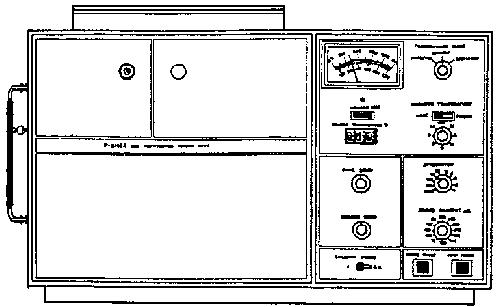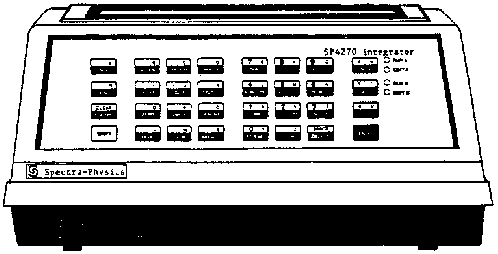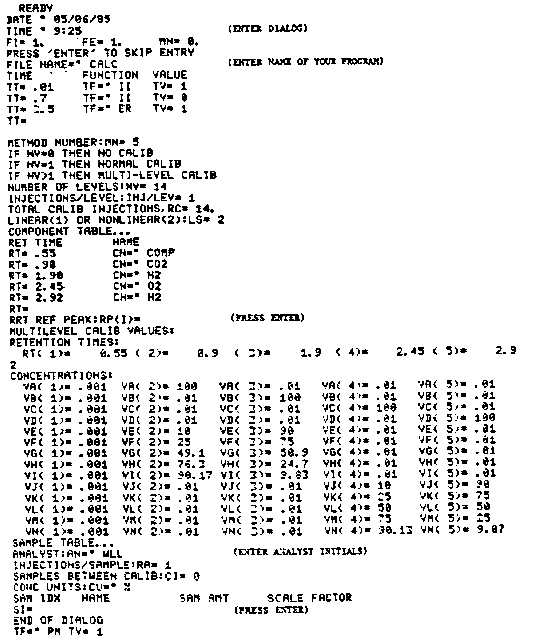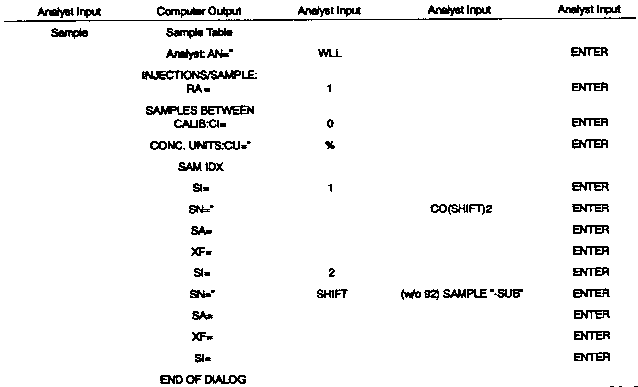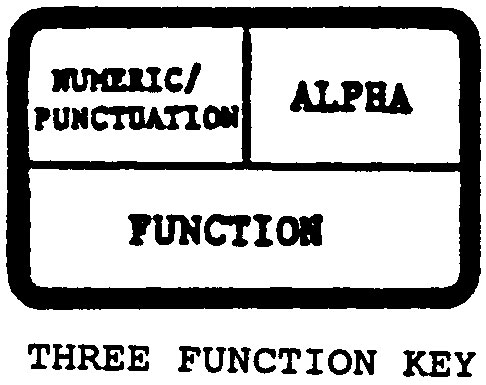BAM Chapter 21B: Modification of Headspace Gas Analysis Methodology
Bacteriological Analytical Manual (BAM) Main Page
January 2001
Authors: Warren L. Landry and Margarito J. Uribe
For additional information, contact Steven Simpson
This section may be used as an alternative method by laboratories that have the necessary equipment and expertise.
The use of the SP4270 Integrator in place of the strip chart recorder will free the analyst from time-consuming calculations and identification procedures because the analyst need not monitor the instrument constantly to change the attenuation and stop the procedure between injections. With the integrator, the analyst can simply enter a few basic instructions and a little pertinent information before injections and the integrator will print a report with the analyst's name or initials, sample number, sub number, chromatogram, and the gases detected with their percentage.
- Equipment
-
Fisher gas partitioner Model 1200, with dual thermal conductivity cells and dual in-line columns. Column No. 1 is 6-1/2 ft × 1/8 inch, aluminum packed, with 80-100 mesh ColumpakTM PQ. Column No. 2 is 11 ft × 3/16 inch aluminum packed with 60-80 mesh molecular sieve 13× (Fig. 1).
Note: Other gas chromatograph instruments equipped with the appropriate columns, carrier gas, detector and recorder or integrator may also be suitable for this analysis.
Operating conditions
Column temperature = 75°C
Attenuation = 64
Carrier gas = Argon, with in-let pressure of 60 psig
Flow rate = 41 ml/min through gas partitioner 5 ml/min through flush line
Bridge Current = 125 mA
Column mode = 1 & 2
Temperature mode = Column
Injector temperature = Off - Standby power system, Model SPS 200-117, SAFT America Inc., Electronic Systems Division, 2414 W. 14th St., Tempe, AZ 85281 (Fig. 2).
- Spectra-physics integrator, Model SP4270, Spectra-Physics, Autolab Division, 3333 N. First St., San Jose, CA 95134 (Fig. 3).
-
-
Integrator programming
After turning system on and entering date and time, enter dialog portion of system and program all information as listed below.
Figure 1. Fisher gas partitioner Model 1200
Figure 2. Standby power system, Model SPS 200-117
Figure 3. Spectra-physics integrator, Model SP4270
-
Procedure for calibration injections
With gas partitioner on and integrator connected in the same fashion as strip chart recorder had been previously, make calibration injections with concentrations listed, where:
VA( l)/VN( 1) = percentage composite
VA( 2)/VN( 2) = percentage CO2
VA( 3)/VNt 3) = percentage H2
VA( 4)/VN( 4) = percentage O2
VA( 5)/VN( 5) = percentage N2- Detach flush line from Sample-In Port.
- Attach calibration gas onto Sample-In Port and inject 10 ml.
- Immediately push in plunger to inject gas and push INJ A button on integrator.
- Remove calibration gas and attach flush line.
- Pull out plunger to flush sample loop.
- After integrator has computed calibration (approximately 4 min) repeat these steps until all 14 calibrations have been performed.
At the end of these calibration injections the integrator will compute and print the coefficients of least squares fit to a quadratic equation. The calibration procedure of the instrument has now been completed and is ready for use.
By following the instructions below the analyst can enter his initials, the control gases to be used in conjunction with the sample, the sample No. (omitting the year prefix), and the subsample No. This will program the integrator to print the information so that the final printout is identified and ready for submission with the sample report.
Shown below is an example of the final printout ready for submission with the sample report.
-
Discussion
Past experience has shown that the system, although fairly linear, is not linear enough. When the integrator is programmed to use a nonlinear program, it uses quadratic equations to determine nonlinear curves.
A series of standard concentrations was used to achieve a low, middle, and high concentration of each particular gas for greater accuracy. Fewer calibrations could possibly be carried out, but a loss of accuracy might result.
The analyst should be aware that the SP4270 uses a 3-function keypad. The lower section of each key initiates a system function, while the upper portion represents numeric/punctuation characters (upper left) and alpha characters (upper right) (see Figs. 3 and 4).
Figure 4. Three Function Key.
The SHIFT key is used to shift the keypad from one key section to the other. The EDIT lights -- located on the right-hand side of the keypad -- indicate which key section is currently being accessed for which channel.
This is important for entering information such as CO2, which is a mixture of numeric and alpha characters, or the sample number, where the integrator is programmed to accept alpha characters but the numeric characters must be entered.
- Operating conditions for integrator
Hypertext Source: Bacteriological Analytical Manual, 8th Edition, Revision A, 1998. Chapter 21B.

